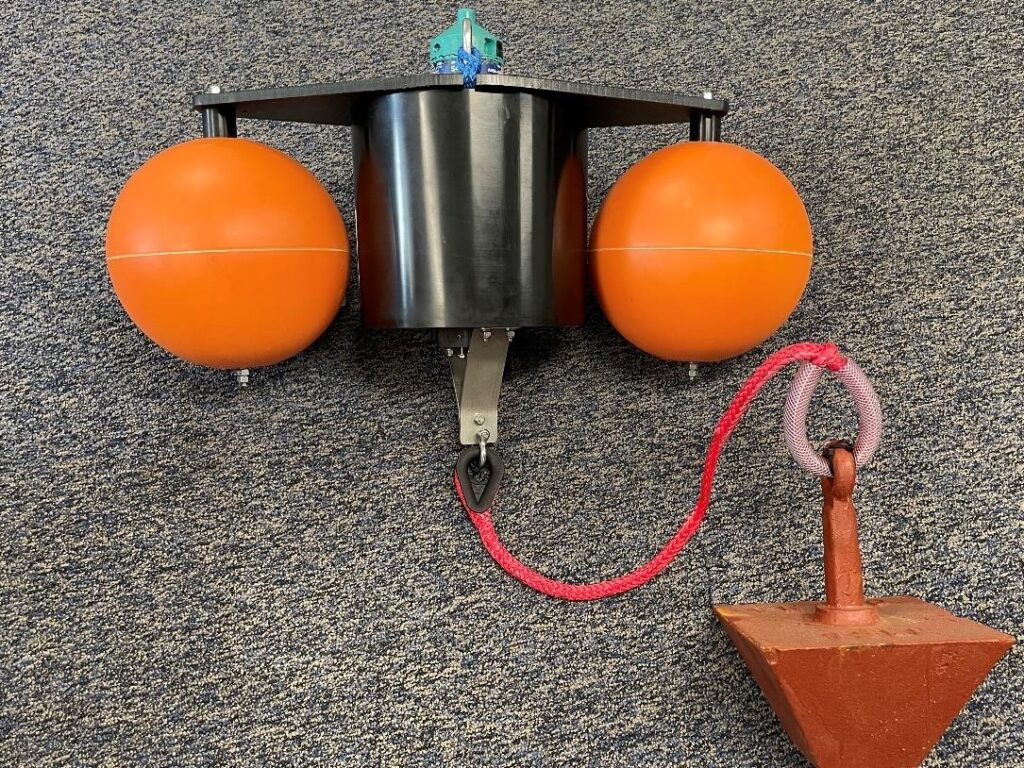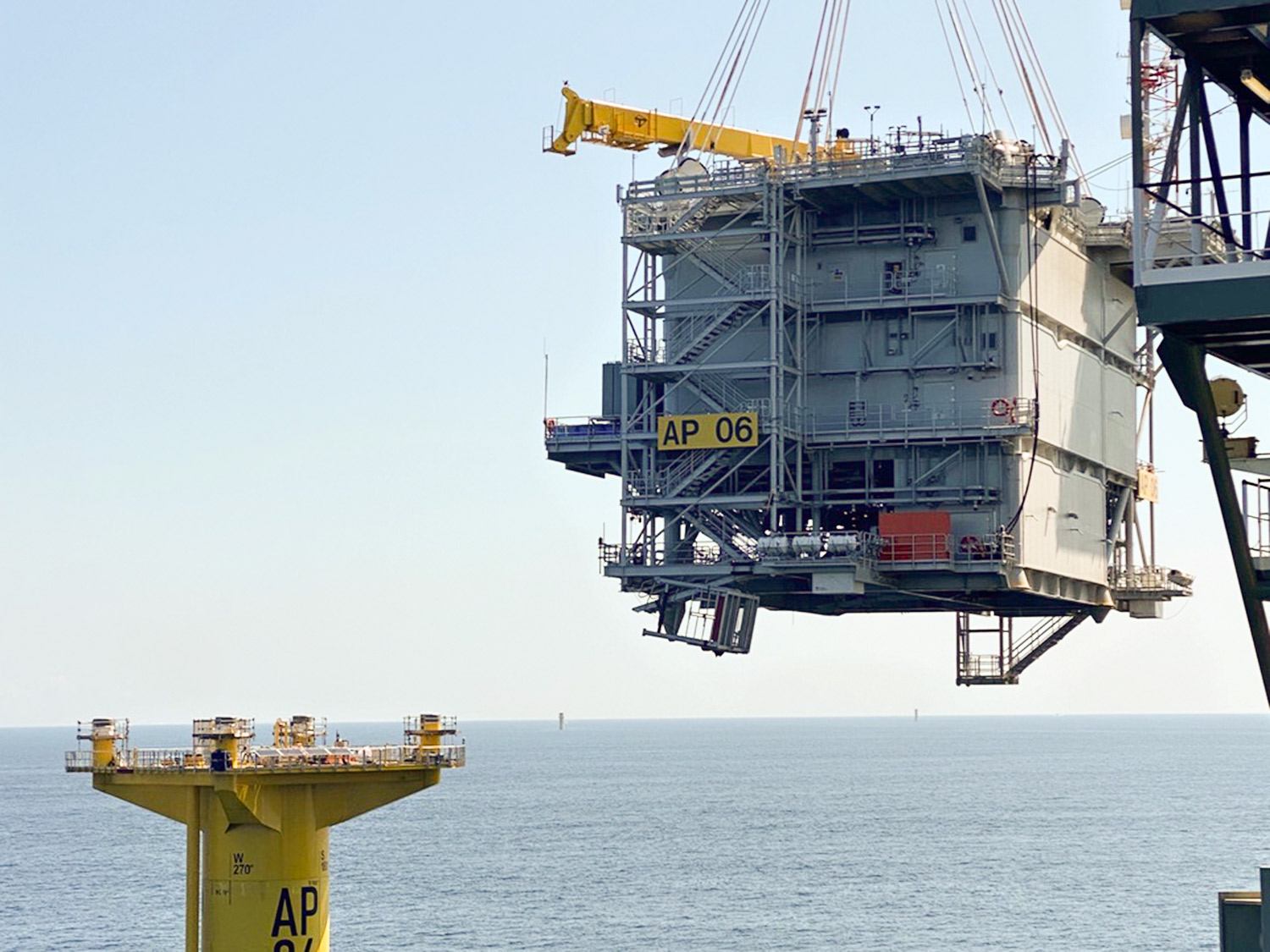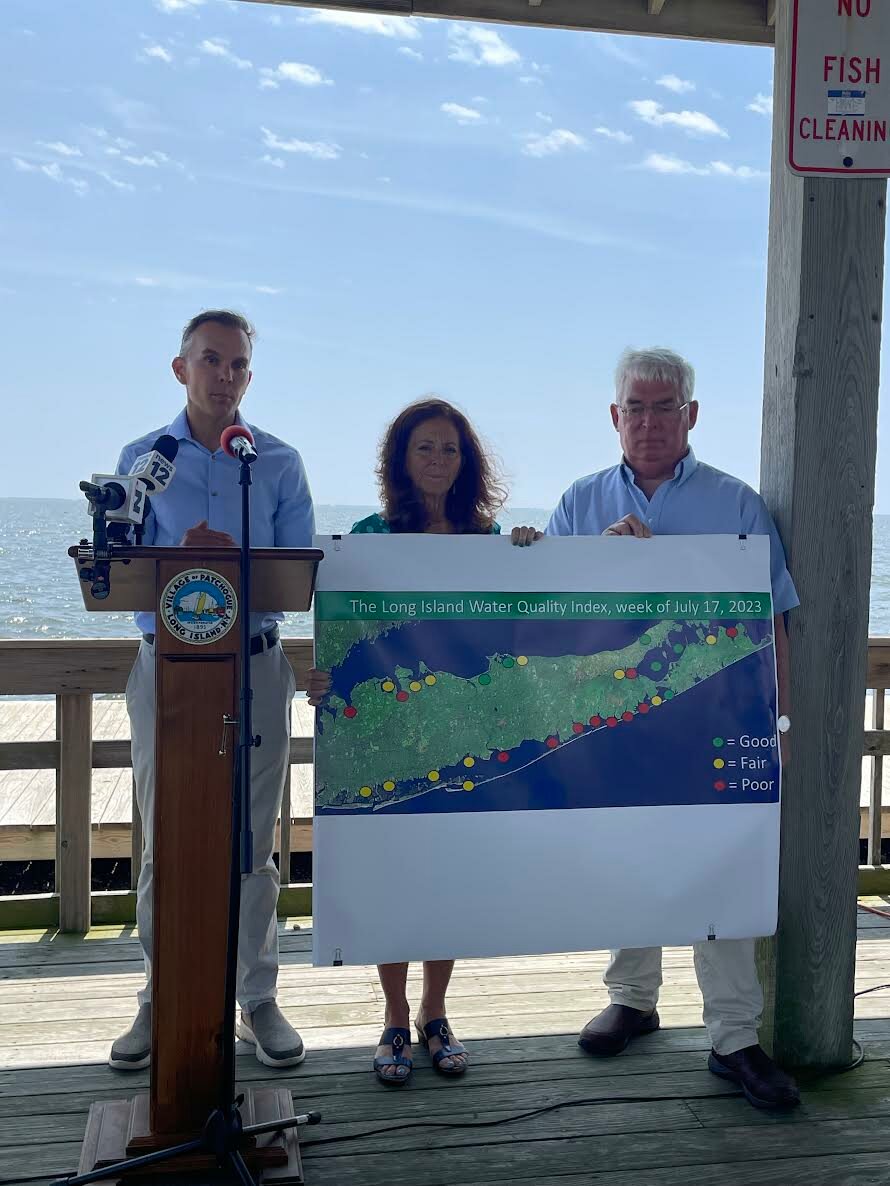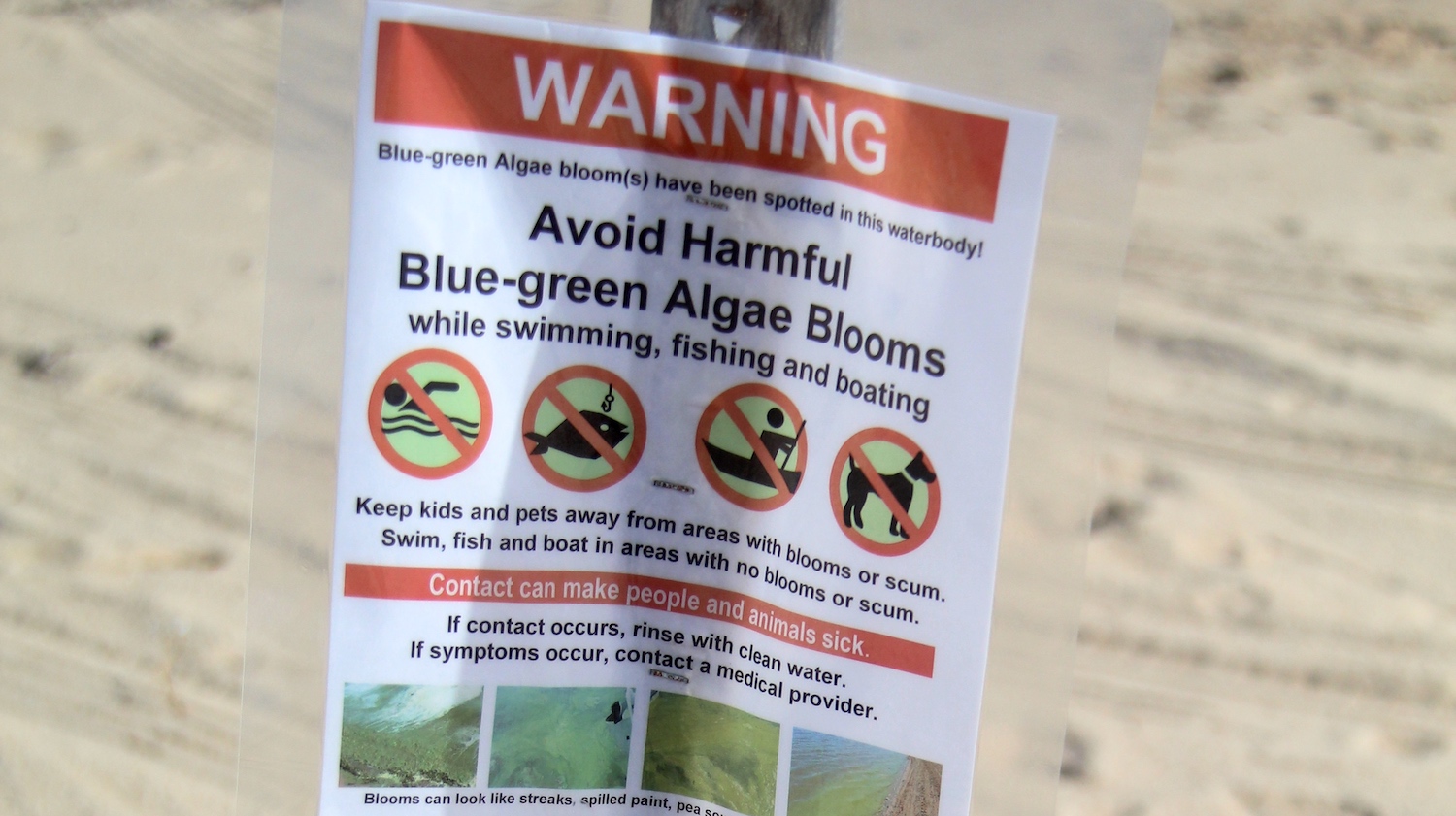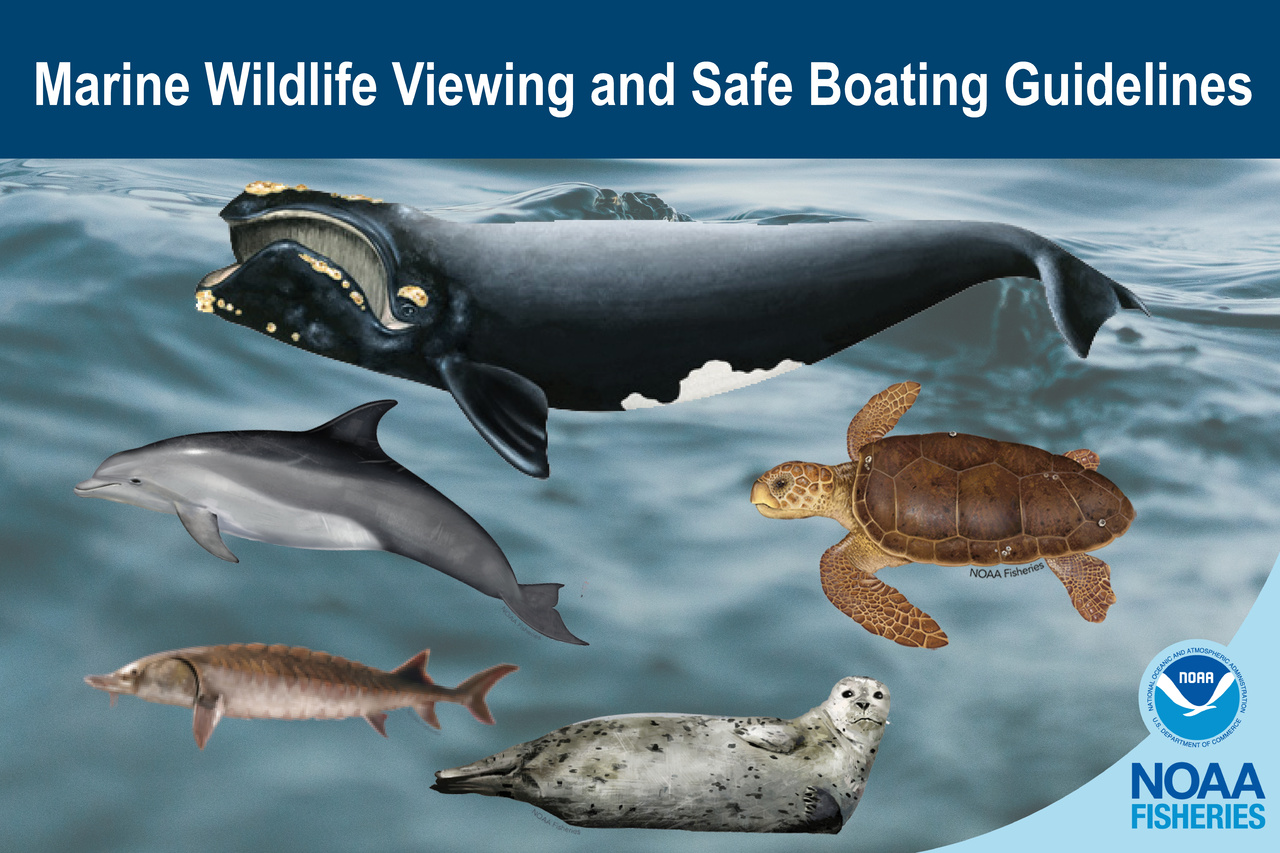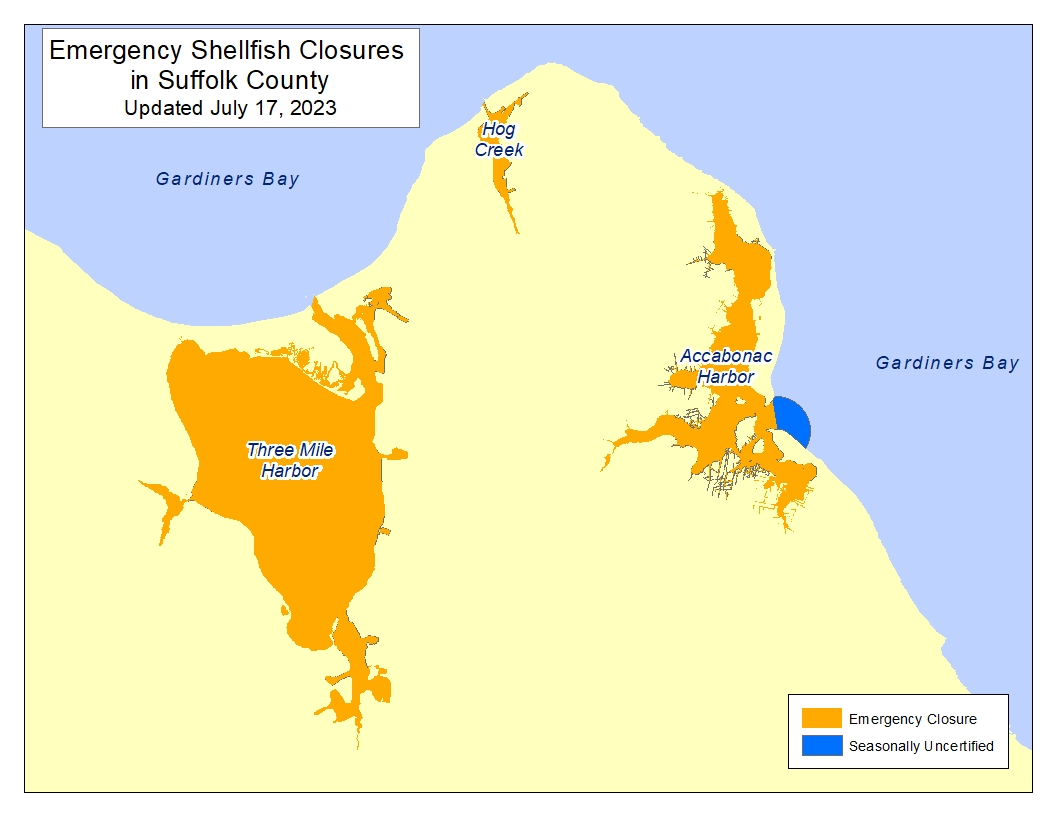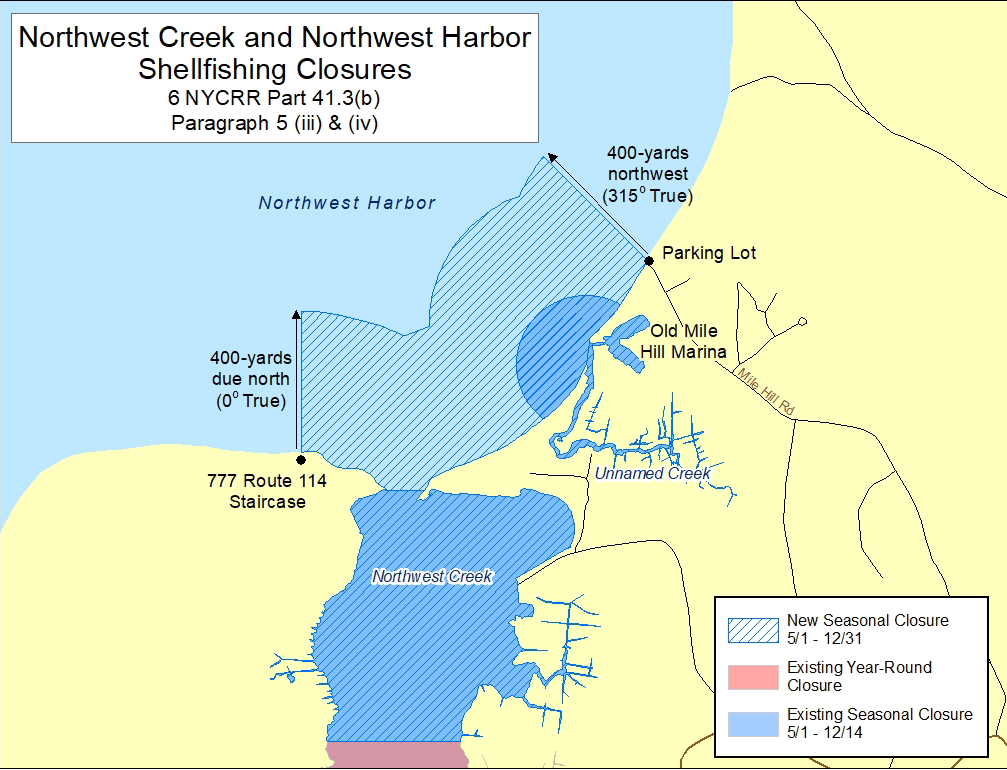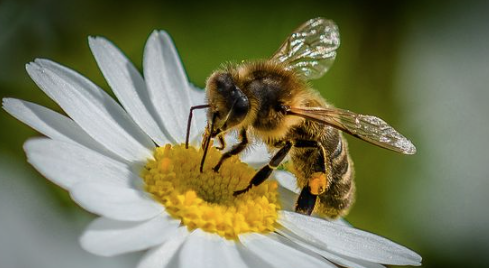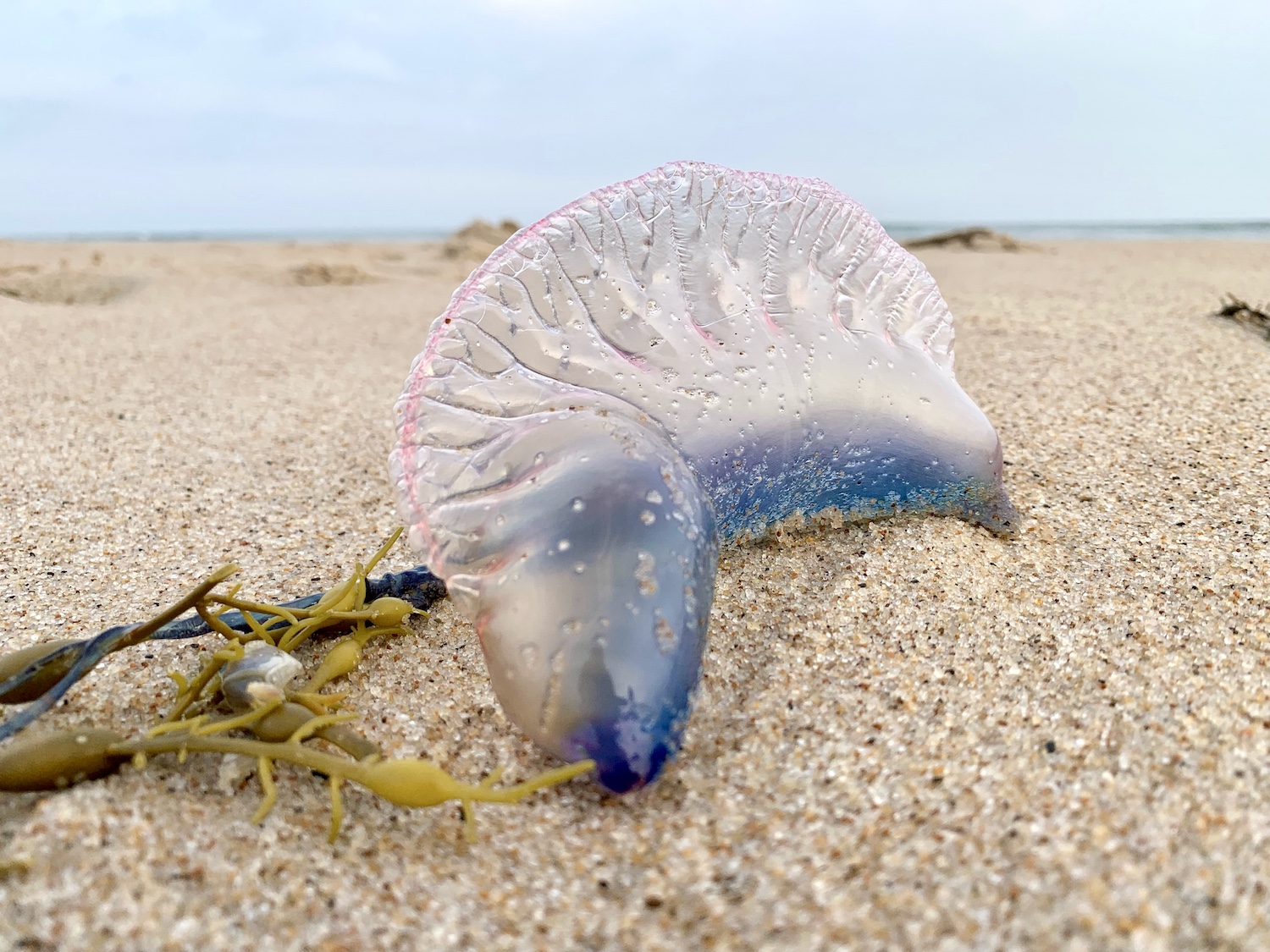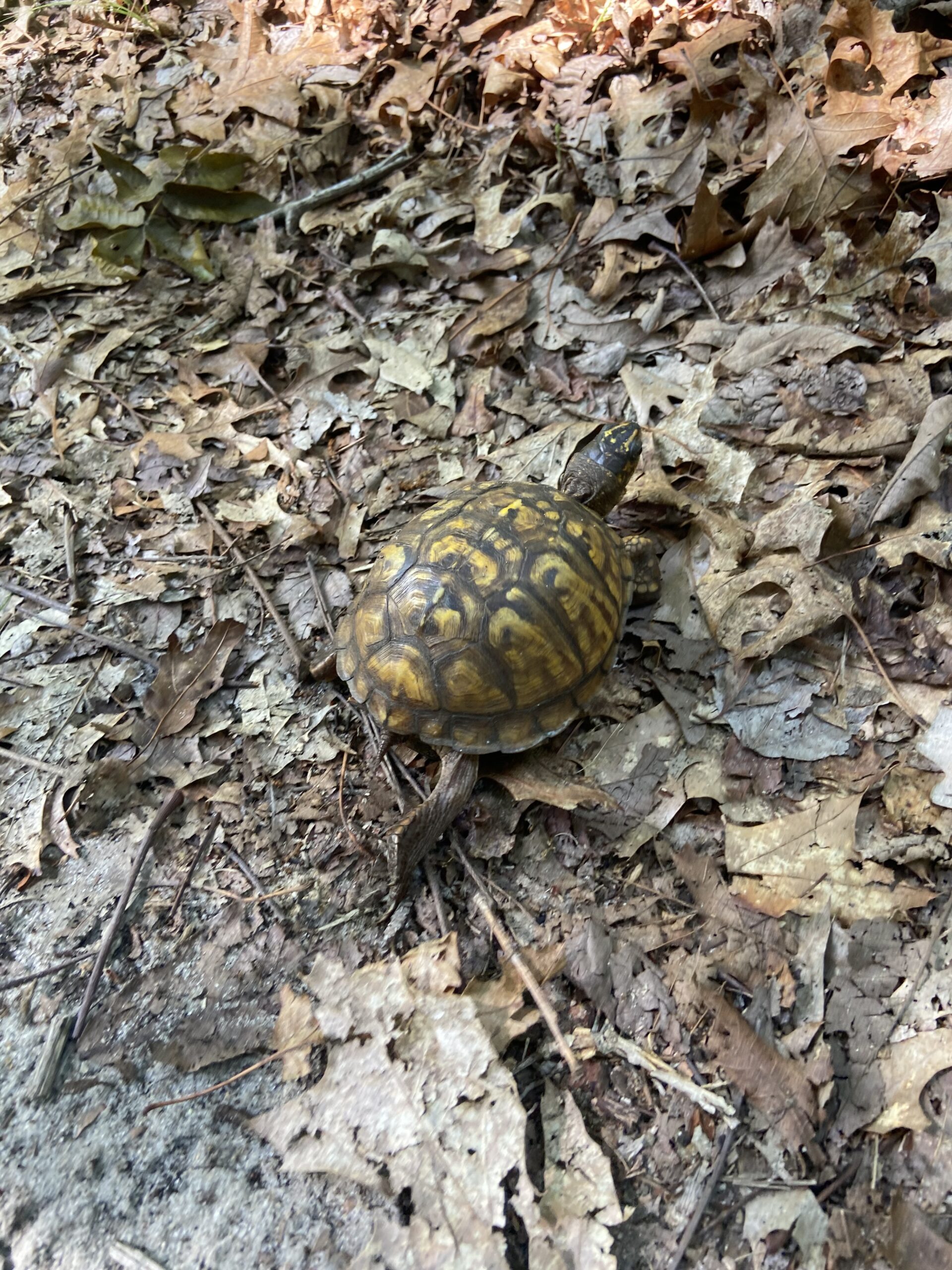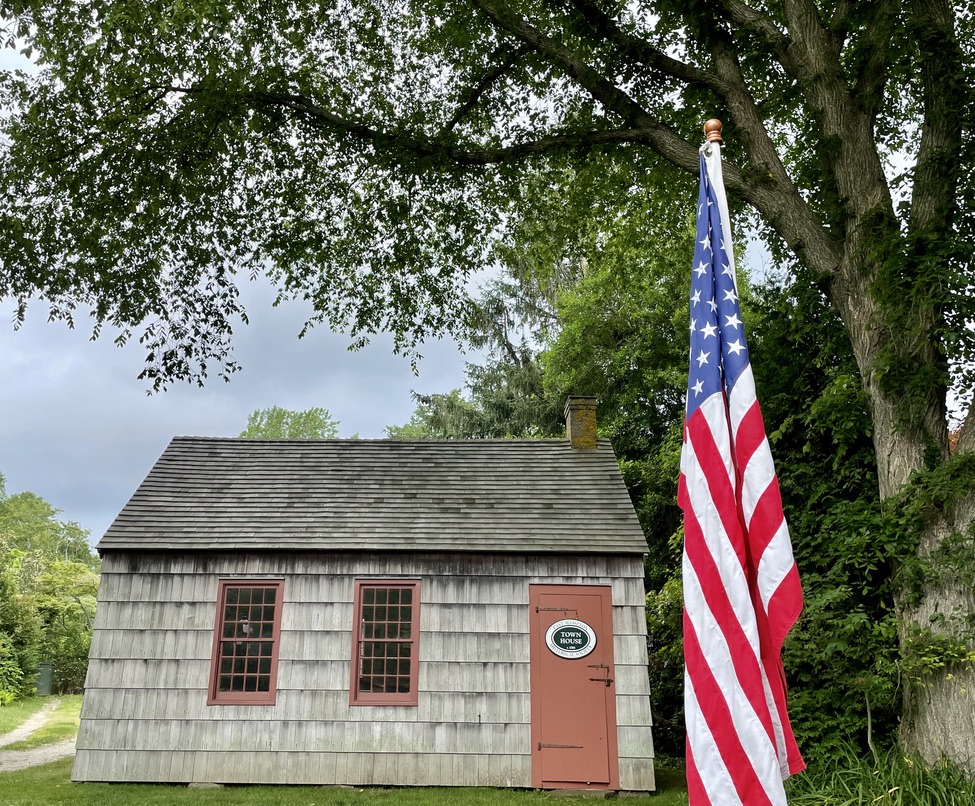Construction of the South Fork Wind farm continued this week with the installation of its offshore substation. Photo: South Fork Wind / Orsted This is the first American-made offshore wind substation constructed by more than 350 workers across three states, according to a spokeswoman for the developers, Orsted and Eversource Energy. The developers of the South Fork Wind farm are at present installing the 12-turbine, 132-megawatt wind farm’s offshore substation at the site, around 35 miles off Montauk Point. The 1,500-ton, 60-foot-tall substation is a topside structure that will sit on a monopile foundation within the wind farm, collecting the
Chris Gobler of Stony Brook University joins with Adrienne Esposito, Citizens Campaign for the Environment, and Kevin McDonald of The Nature Conservancy for a report on water quality. Credit: The Suffolk County News Dr. Chris Gobler, of Stony Brook University’s Gobler Laboratory, met with Citizens Campaign for the Environment and the Nature Conservancy earlier today at Mascot Dock in Patchogue Village to debrief the current Long Island water quality. According to Gobler, this summer has recorded some of the worst fish kills, harmful algal blooms, and water quality impairments. He attributes the decline due to nitrogen pollution from dated sewers
The Suffolk County Legislature’s vote came in the wake of a report that water quality in Long Island’s coastal zones has hit an all-time low, “with water bodies awash in fish kills, dead zones, toxic algal blooms, and fecal bacteria,” according to an advisory issued last Thursday by Christopher Gobler of Stony Brook University’s School of Marine and Atmospheric Sciences. Photo: Durell Godfrey Read the article by Christopher Walsh: EH Star article
Please be advised: Accabonac Harbor REMAINS CLOSED to shellfishing. Effective immediately the New York State Department of Environmental Conservation has lifted closures in certain areas that were temporarily closed due to the extreme rainfall event of July 16, 2023. The following areas have been reopened to the taking of shellfish: All normally certified areas of Sag Harbor and its tributaries, Northwest Harbor and Montauk Harbor (Lake Montauk). Recission of Temporary Closures
Marine Wildlife Viewing & Safe Boating Guidelines NOAA New England and the Mid-Atlantic coastlines offer the potential for exhilarating marine wildlife viewing experiences. Whether on the beach or on the water, if you see protected animals like whales, dolphins, seals, sea turtles, or Atlantic sturgeon, follow the tips below to keep the animals and your passengers safe. NOAA FISHERIES
As of sunrise Friday July 21, all certified open areas of Three Mile Harbor and Hog Creek have been re-opened to Shellfishing. All other areas in the Town of East Hampton listed below are still closed until further notice. Effective immediately, the following areas are still closed to the harvest of shellfish: Town of East Hampton: All Town underwater lands in the creeks, coves, and harbors within the Town of East Hampton, including all that area of Sag Harbor and its tributaries, Northwest Harbor lying south and east of a line extending northeasterly from the westernmost point of land at
In its efforts to protect public health, the New York State Department of Environmental Conservation (DEC) has reclassified the waters in portions of Northwest Creek, Northwest Harbor, Gardiner’s Bay and Napeague Harbor. This is the result of changes to the water quality in these bodies of water. See the full description of the closures in the formal document below. NY State DEC Shellfish CLosures New Shellfish Closures in Northwest Creek. New Shellfish Closures in Napeague Harbor. New Shellfish Closures in Lake Montauk. New Shellfish closures in Gardiner’s Bay outside of Accabonac Harbor.
Bee on daisy pollinating Should Governor Kathy Hochul sign a bill that New York legislators have passed, it would be the nation’s first ban on certain uses of neonicotinoids, insecticides related to nicotine that has shown to be harmful to pollinators. Environmental organizations and the public have long urged the state to ban neonicotinoids to protect birds and bees and are hopeful the governor will sign the “Birds and Bees Protection Act.” The bill has been considered for several years, and supporters say it will reduce neonic exposure in the state by 80 to 90 percent. The bill would ban
In years past, young children frolicked in early summer’s evenings, running merrily with glass jars to capture the ephemeral firefly as it flew by. Over the years, with outdoor lighting installed on properties, the use of fertilizers by landscapers or homeowners to help make lawns greener, the loss of habitat, and the removal of fallen leaves that are home to insects and small wildlife animals, fireflies all but disappeared. Fireflies at Night Photo Star Tribune To find out more about why we’re seeing fewer or no fireflies during summer evenings, here is the full article by Christopher Gangemi of The
Portuguese Man O’War jellyfish Photo Carissa Katz John Ryan Jr., the head lifeguard of the East Hampton Town calls them “sea pests” but the sting by a Portuguese man-o-war jellyfish is more than just a “pest” as it packs a powerful and painful sting that needs immediate attention to help relieve discomfort. According to the National Oceanic and Atmospheric Administration (NOAA), although the Portuguese man-o-war resembles the common jellyfish, it is actually a species of the “siphonophore, a group of animals similar to jellyfish. Last week this man-o-war was discovered on Indian Wells beach, seemingly deceased, however, even when dead,
Please slow down when driving on our roadways – over the July 4th holiday two were found killed as they crossed the road. If you stop to avoid the turtles and it is safe to do so, carefully pick the turtle up and carry it to the other side in the same direction it was headed. Turtles seek water and if found, they are mostly on their way to a body of water. Turtles are an endangered species, if you find a wounded or injured turtle, please contact Turtle Rescue of the Hamptons: (631) 779-3737 https://www.turtlerescueofthehamptons.org/ Box turtle in Northwest
Old Town House – circa 1731 Photo Susan McGraw-Keber This is the original meeting house of the East Hampton Town Trustees! The Trustees met at the Old Town House built in 1731 on Main Street in the village to commemorate the 375th anniversary of the Town of East Hampton. While several discussions took place regarding Trustee issues, a large portion of the meeting concerned the restoration of the inlet and the health of the circulation of the waters at Napeague Harbor and the webinar presentation meeting provided by Peconic Estuary Partnership (PEP). Napeague Harbor at Lazy Point Photo Carissa Katz
“As part of the fish monitoring study outlined in the SFW Fisheries Study Work Plan, the Stony Brook University team is conducting a regular visit to the sensor array off Wainscott today to collect data from sensors, replace batteries, and deploy new retrievable moorings alongside the previous moorings. As the Stony Brook team is deploying new moorings alongside the existing moorings there’s no change to the mariners briefing, our standard method for updating mariners on the presence of equipment in navigational waters. Members of the fisheries outreach team, in collaboration with the research team, have worked with the fishing community to select an alternative mooring, one that is smaller, lightweight and retrievable, and is more compatible with commercial fishing in response to the feedback we’ve received from the community on original deployment of cement moorings.”

